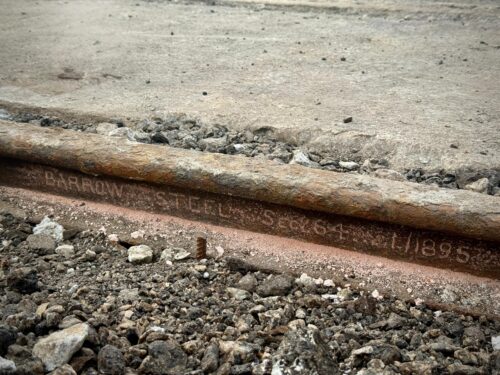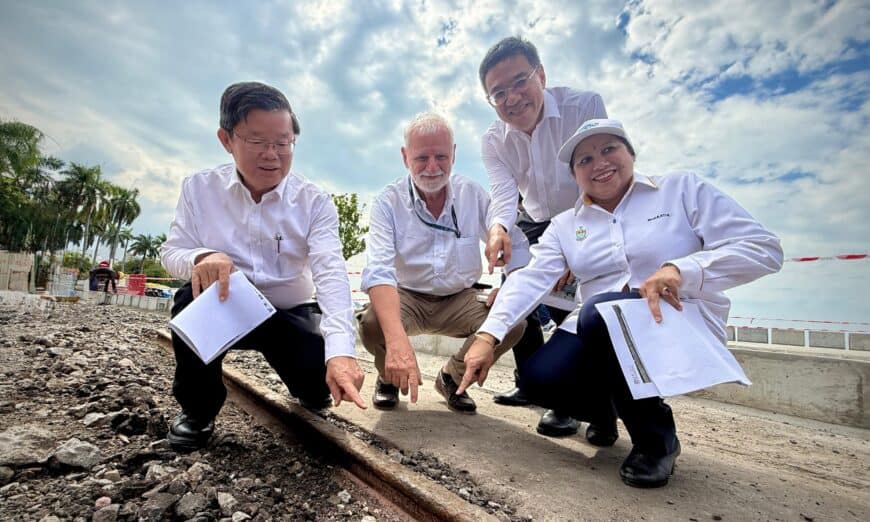PENANG has uncovered a significant archaeological find, a section of pre-World War II trolley track measuring 7.4 metres, near the outer vicinity of Fort Cornwallis, at the Esplanade in George Town.
Chief Minister Chow Kon Yeow said the discovery was made during landscaping works outside the northwest bastion of Fort Cornwallis, when construction teams found a pair of narrow-gauge steel rails embedded beneath the road surface.
It is learned that the track was discovered on June 26.
Chow, who visited the site today together with representatives from the National Heritage Department (JWN), Penang Island City Council (MBPP), and George Town Conservation and Development Corporation (GTCDC), said the track was believed to date back to the British colonial era and was later utilised by the Japanese during the Occupation.
“Based on pre-1945 military maps and aerial photographs, a trolley track once ran around Fort Cornwallis. It is believed to have been built by the British before World War II and subsequently used by the Japanese during the Japanese Occupation,” he said.
“It was used to transport weapons and other materials during the war.
“This is not the first time a trolley track has been discovered. Similar track was found during earlier restoration works inside Fort Cornwallis and have since been preserved in situ.”
Chow also added that the newly discovered 7.4-metre segment is likely just a portion of a longer track, as more sections would have originally surrounded Fort Cornwallis before being removed during past roadworks.
“The track may have also connected to Swettenham Pier, possibly to facilitate the transport of goods from ships,” he added.

Chow commended the project team for recognising the historical value of the discovery.
“This finding was unexpected, but it has certainly captured our attention and deserves to be preserved.
“The project team could have taken the easy way by covering the track, but they understood the significance of preserving invaluable relics from the pre-World War II era,” he said.
Following the discovery, the JWN, GTCDC, state government, and MBPP conducted a joint site visit to assess the best way to manage the find.
Chow said the site would now be preserved and transformed into an open-air exhibit for public viewing.
Chow recalled a previous visit to Beijing Road Pedestrian Street in Guangzhou, China, where sections of ancient roads are preserved under glass panels, allowing visitors to walk over historical pathways while enjoying a modern shopping experience.
“The state government, MBPP, GTCDC, CMI, Think City, and the Aga Khan Trust for Culture are extremely excited about this discovery and look forward to sharing it with the public and visitors alike.
“The state government will work together with the JWN on the conservation work of the trolley track. Although the discovery was made in Penang, it is part of Malaysia’s historical legacy,” he added.

Also present during the site visit were state executive councillor for Tourism and Creative Economy Wong Hon Wai, state GTCDC adviser Francesco Siravo and Chief Minister Incorporated (CMI) general manager Datin S. Bharathi.
Story by Tanushalini Moroter
Pix & Video by Siti Nuratikah Rahmat

